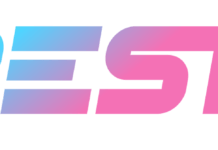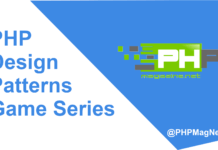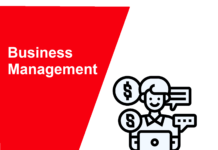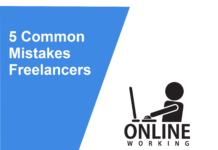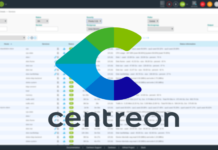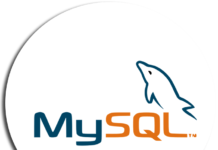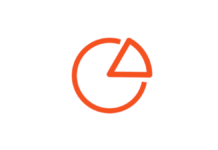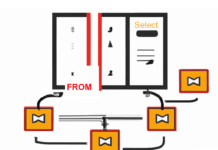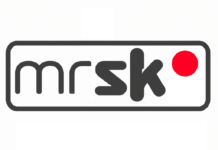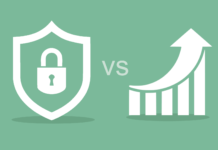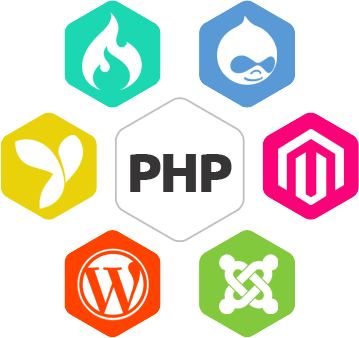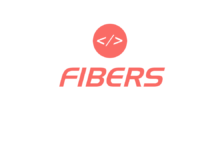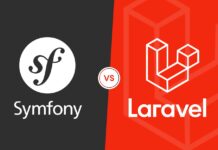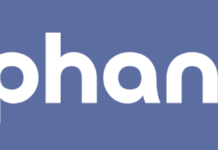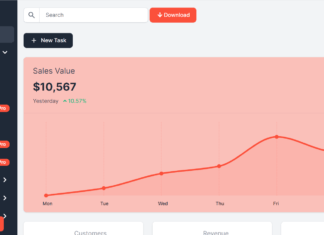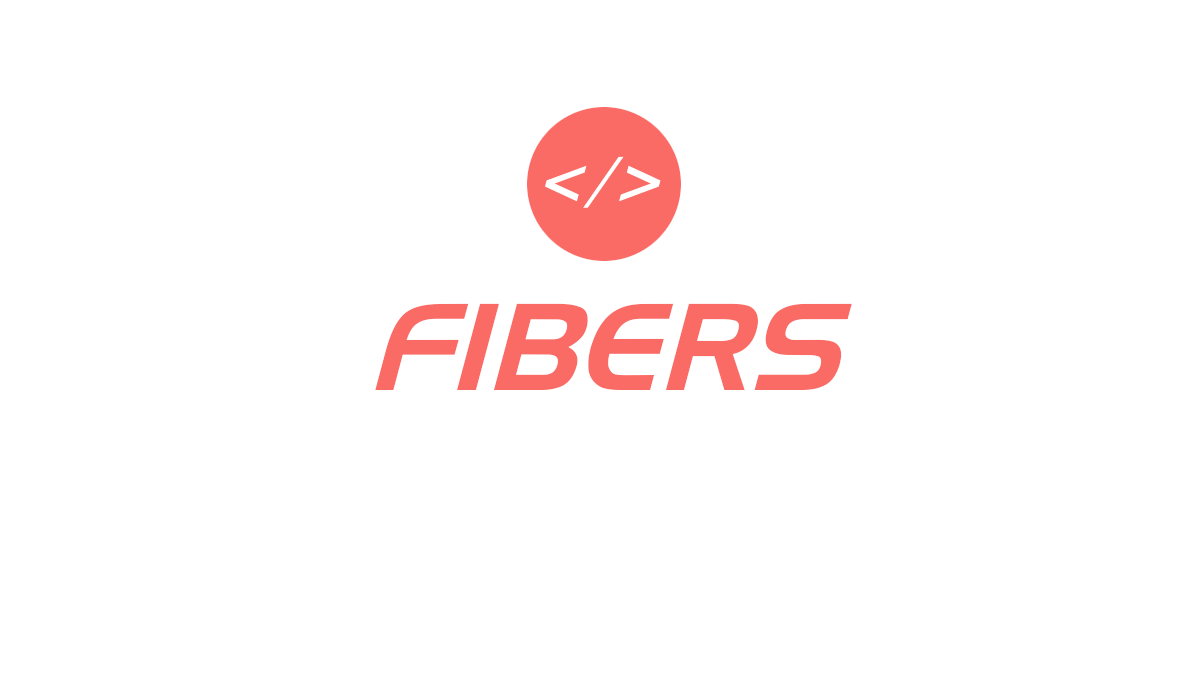Choosing the right PHP framework for your project can be a daunting task, especially if you’re new to web development or have limited experience with PHP. In this article, we’ll guide you through the process of selecting the best PHP framework for your project by considering factors such as project requirements, development team experience, and community support. By the end of this article, you’ll be equipped with the knowledge and tools you need to make an informed decision and kick off your project with confidence.
A. what’s a PHP Framework ?
A PHP framework is a collection of pre-written PHP code that provides a standardized way of building web applications. It includes libraries, helpers, and tools that help developers to create web applications more efficiently and effectively. By using a PHP framework, developers can save time and effort by not having to write every line of code from scratch. This allows them to focus on the unique features of their application, rather than spending time on repetitive tasks.
PHP frameworks also provide a structure for organizing code, making it easier to maintain and update. They typically follow the Model-View-Controller (MVC) architectural pattern, which separates the application logic into three distinct components. The model handles data storage and retrieval, the view handles user interface and presentation, and the controller handles user input and application flow.
There are many PHP frameworks available, each with their own strengths and weaknesses. Choosing the right framework for your project can be a crucial decision, as it can have a significant impact on the development process and the final product. In the next section, we’ll discuss some key factors to consider when choosing a PHP framework for your project.
B. Importance of choosing the right framework for your project:
Choosing the right PHP framework is crucial for the success of any web development project. The framework you choose can have a significant impact on the efficiency, scalability, and maintainability of your code. Here are some reasons why choosing the right framework is important:
- Efficiency: A good PHP framework can help you write code faster and more efficiently by providing a set of pre-built modules and libraries. These modules can help you perform common tasks such as database access, form validation, and user authentication, without having to write the code from scratch.
- Scalability: The right framework can make it easier to scale your application as your user base grows. A good framework will have built-in support for caching, load balancing, and other features that can help your application perform well even under heavy traffic.
- Maintainability: As your application grows and evolves, it becomes increasingly important to keep your code organized and maintainable. A good PHP framework can help you achieve this by providing a clear separation of concerns, modular code structure, and other features that make it easier to maintain and update your code.
- Community Support: Choosing a popular PHP framework can give you access to a large and active community of developers who can help you with troubleshooting, sharing best practices, and finding solutions to common problems. This community support can be invaluable, especially if you are working on a complex or large-scale project.
II. Project Requirements
A. Understanding your project requirements
Before choosing a PHP framework, it is important to understand the specific requirements of your project. This will help you determine which framework is the best fit for your needs. Consider factors such as the size and complexity of your project, the type of application you are building, the scalability and performance requirements, and the available resources and skills of your development team.
For instance, if you are building a small-scale web application, a lightweight framework such as Slim or Lumen may be more suitable. On the other hand, if you are building a large-scale enterprise application with complex features and high performance demands, a full-stack framework like Laravel or Symfony may be a better fit.
By taking the time to understand your project requirements, you can make an informed decision on which PHP framework to use, ultimately leading to a more successful and efficient development process.
B. Identifying key features and functionalities needed for your project
Before choosing a PHP framework, it’s important to identify the key features and functionalities needed for your project. This can help you determine which framework is best suited for your needs. Consider the following factors:
- Scalability: If you anticipate that your project will grow in size and complexity over time, you will need a framework that can handle scalability.
- Security: Security is a critical concern for any web application. Choose a framework that has built-in security features and follows best practices for security.
- Performance: If your application requires high performance, look for a framework that is optimized for speed and efficiency.
- Database support: If your application requires database support, make sure the framework you choose has a robust and reliable database layer.
- Templating engine: If you want to separate your application logic from presentation, look for a framework that has a built-in templating engine.
- Community support: A strong and active community can provide valuable resources, support, and updates for the framework. Look for a framework with an active community to ensure that you will have access to resources and help when you need it.
III. Popular PHP Frameworks
A. Overview of popular PHP frameworks
An overview of popular PHP frameworks can be a helpful starting point when it comes to choosing the right one for your project. Here are some of the most widely used PHP frameworks:
- Laravel: Laravel is one of the most popular PHP frameworks, known for its elegant syntax and easy-to-use features. It comes with a built-in ORM, authentication system, and templating engine, among other features.
- Symfony: Symfony is a highly modular framework that emphasizes flexibility and scalability. It’s known for its use in enterprise-level projects and comes with a large number of reusable components.
- CodeIgniter: CodeIgniter is a lightweight PHP framework that’s easy to learn and use. It’s known for its speed and simplicity, making it a popular choice for small to medium-sized projects.
- Yii: Yii is a high-performance PHP framework that’s known for its security features and robust caching system. It’s a good choice for large-scale projects with high traffic.
- CakePHP: CakePHP is a popular framework that’s known for its rapid development capabilities. It comes with a wide range of built-in features, including scaffolding and code generation.
- Phalcon: Phalcon is a unique PHP framework that’s written in C and optimized for high performance. It’s a good choice for projects that require high speed and low overhead.
These are just a few examples of the most popular PHP frameworks available. Each one has its own strengths and weaknesses, and the right choice for your project will depend on a variety of factors, including your project requirements and development team’s skillset.
B. Comparison of each framework’s features, strengths, and weaknesses
When choosing a PHP framework, it’s essential to understand the features, strengths, and weaknesses of each framework to make an informed decision. Here’s a comparison of some popular PHP frameworks:
- Laravel: Laravel is a widely used PHP framework known for its expressive syntax and robust features. It provides built-in support for authentication, authorization, and routing. Laravel’s primary strengths are its comprehensive documentation, extensive community support, and a wide range of pre-built packages. However, Laravel can be complex for beginners due to its extensive features and steep learning curve.
- Symfony: Symfony is a highly customizable PHP framework that allows developers to choose the components they need for their project. It offers robust routing, authentication, and debugging tools. Symfony’s primary strengths are its flexibility, scalability, and modularity. However, Symfony has a steep learning curve and can be more challenging to set up than other frameworks.
- CodeIgniter: CodeIgniter is a lightweight PHP framework designed for rapid development. It provides built-in support for database handling, form validation, and session management. CodeIgniter’s primary strengths are its simplicity, ease of use, and small footprint. However, CodeIgniter lacks some of the advanced features and functionalities found in other frameworks.
- Yii: Yii is a high-performance PHP framework that’s well-suited for large-scale web applications. It provides built-in support for caching, authentication, and security. Yii’s primary strengths are its speed, scalability, and security. However, Yii has a steeper learning curve than some other frameworks, and its documentation can be more challenging to navigate.
Other popular PHP frameworks include CakePHP, and Phalcon. Each framework has its own unique features, strengths, and weaknesses. It’s important to evaluate each framework carefully to determine which one is best suited for your project’s specific requirements.
IV. Community Support
A. Importance of community support when choosing a PHP framework
When choosing a PHP framework, it’s important to consider the level of community support it has. A strong community can provide many benefits, including access to a wide range of resources, a larger pool of developers who can provide assistance, and more frequent updates and bug fixes.
A framework with a strong community will have an active forum or community site where developers can share ideas and ask questions. Additionally, a large community means that there are more people testing the framework and submitting bug reports, which can lead to quicker bug fixes and updates.
Another important consideration is the availability of third-party libraries and plugins. A strong community will have a wide variety of plugins and libraries available that can extend the functionality of the framework and make development faster and easier.
Therefore, it’s essential to choose a PHP framework with a strong and active community. Popular frameworks such as Laravel, Symfony, and CodeIgniter have vibrant communities that provide extensive support and resources for developers. These communities also offer a wealth of knowledge and experience that can help you build better applications faster.
B. Evaluating a framework’s community support (documentation, forums, user groups, etc.)
A framework with a strong and active community can provide you with access to a wealth of resources, including documentation, forums, user groups, and tutorials. This can be invaluable in helping you to quickly and efficiently solve problems, learn new skills, and stay up-to-date with the latest best practices and trends.
On the other hand, a framework with a weak or inactive community can make it difficult to find the support you need. You may find yourself struggling to solve problems or facing roadblocks that could have been easily resolved with the help of an active community.
When evaluating a framework’s community support, there are several factors to consider. Look for frameworks that have well-documented APIs and user guides, active forums and user groups, and a strong social media presence. Additionally, check for the number of contributors, frequency of updates, and the responsiveness of the core development team to bug reports and feature requests.
By taking the time to evaluate a framework’s community support, you can ensure that you choose a framework that will provide you with the resources and support you need to build a successful project.
V. Development Team Expertise
A. Evaluating your development team’s expertise with different PHP frameworks
While some frameworks may have a steeper learning curve than others, your team’s familiarity and comfort level with a particular framework can greatly impact the speed and quality of your development process.
Take some time to evaluate your team’s existing knowledge and experience with different PHP frameworks. If your team has extensive experience with a particular framework, it may be a good idea to continue using that framework to ensure a smooth and efficient development process. On the other hand, if your team is open to learning new frameworks or has limited experience with PHP frameworks in general, it may be worth exploring other options that align more closely with your project requirements and development goals.
B. Training and resources available for learning a new framework
Once you have evaluated your team’s expertise with different PHP frameworks, it’s important to consider the availability of training and resources for learning a new framework.
Some frameworks may have extensive documentation, tutorials, and online resources available, while others may have limited resources or rely heavily on community support.
It’s important to consider the learning curve for each framework and whether your team has the time and resources to learn a new one. Some frameworks may be more complex and require more training, while others may have a simpler structure and be easier to learn.
Additionally, some frameworks may have a larger pool of developers who are familiar with them, making it easier to find support and resources as needed. This can also impact the availability of plugins and third-party integrations, which can save development time and effort.
Ultimately, the availability of training and resources should be a key consideration when choosing a PHP framework, as it can impact the success and efficiency of your development process.
VI. Security and Performance
A. Importance of security and performance in a PHP framework
When it comes to choosing a PHP framework, security and performance should be among your top considerations. Your web application’s success depends on its ability to perform well and remain secure against potential attacks.
A secure framework can help you avoid vulnerabilities and prevent your site from being compromised by malicious actors. Similarly, a high-performance framework can improve the user experience and help you handle a large number of requests efficiently.
It’s important to look for frameworks that have a strong track record of addressing security vulnerabilities and provide features like built-in encryption, validation, and access control.
Performance is also critical, and you should consider factors such as caching, database optimization, and code optimization when evaluating frameworks. Look for frameworks that offer fast response times, scalability, and support for caching and other performance-enhancing features.
Some important information on the security and bug tracking practices of a few popular PHP frameworks:
- Laravel: Laravel has a strong focus on security, with features such as encryption, CSRF protection, and a password reset system built into the framework. The framework has an active security team that works to identify and fix security issues as they arise. Laravel also uses an automated bug tracking system to catch and address bugs as quickly as possible.
- Symfony: Symfony has a dedicated security team that tracks security issues and releases security updates as needed. The framework also has a number of security features built in, including CSRF protection, input validation, and encryption. Symfony uses a combination of automated and manual testing to catch and address bugs.
- CodeIgniter: CodeIgniter has a smaller team of developers compared to other frameworks, but the team is committed to addressing security issues and has a track record of releasing security patches promptly. The framework includes built-in security features such as CSRF protection and input filtering. CodeIgniter uses a manual bug tracking system.
- Yii: Yii has a strong focus on security, with features such as input validation, CSRF protection, and RBAC (Role-Based Access Control) built into the framework. The framework has a security team that tracks vulnerabilities and releases security updates as needed. Yii also uses an automated bug tracking system to catch and address bugs quickly.
It’s worth noting that these frameworks are all widely used and have a strong track record when it comes to security and bug tracking. Ultimately, the best way to evaluate a framework’s security and bug tracking practices is to research the framework’s documentation, security updates history, and community feedback.
B. Evaluating a framework’s security features and performance benchmarks
Evaluating the framework’s security features and performance benchmarks is crucial. Frameworks with strong security features and good performance can prevent potential security threats and provide better user experience.
First, you should check the security features that are built into the framework. Most frameworks offer features such as CSRF protection, input validation, and encryption libraries. Some frameworks, such as Laravel, also offer built-in security features like authentication and authorization systems.
Next, you should evaluate the framework’s performance benchmarks. The performance of a framework can have a significant impact on your project’s scalability and user experience. Some frameworks, like CodeIgniter, are known for their speed and low overhead, while others, like Symfony, offer more advanced features that may slow down performance.
To compare the security and performance of popular PHP frameworks, you can look at various benchmarks and reports that have been published by independent sources. These reports often measure factors such as response time, memory usage, and security vulnerabilities. For example, the OWASP Top 10 list is a widely recognized report that ranks the top security risks in web applications and can be used to evaluate a framework’s security features.
Ultimately, the security and performance of a PHP framework should be evaluated based on your project’s specific needs and requirements. It’s important to choose a framework that offers the right balance of security, performance, and features for your project.
VII. Licensing and Cost
A. Understanding the licensing and cost implications of different PHP frameworks
When choosing a PHP framework, it’s important to consider the licensing and cost implications of each option. Some frameworks are completely free and open-source, while others have commercial licenses or offer paid support and additional features.
It’s important to understand the terms of each framework’s license and whether it aligns with your project’s needs and goals. For example, if you’re building a commercial project, you may want to consider a framework with a commercial license that allows for closed-source distribution.
Additionally, some frameworks offer paid support and additional features that can be beneficial for larger projects or enterprise-level applications. However, it’s important to weigh the cost of these features against the potential benefits and whether they are necessary for your project’s success.
It’s also important to consider any additional costs associated with using a particular framework, such as hosting requirements or third-party libraries. By considering the licensing and cost implications of different PHP frameworks, you can make an informed decision that aligns with your project’s goals and budget.
Some PHP frameworks offer additional commercial plugins, modules, or solutions that may add to the overall cost of using the framework. These can be especially relevant if your project requires specific functionality that is not included in the core framework.
For example, Laravel offers a variety of commercial packages, such as Laravel Forge for server management, Laravel Envoyer for continuous deployment, and Laravel Spark for building SaaS applications. Symfony also provides commercial options like SensioLabsInsight, a code quality analysis tool, and Blackfire, a performance profiling tool. Yii has YiiPowered, a marketplace for Yii extensions and modules.
Before choosing a PHP framework, it’s important to research and consider the costs of any necessary commercial plugins or solutions to ensure they fit within your project budget. Additionally, be aware that some frameworks may have hidden costs associated with using certain plugins or solutions, such as licensing fees or subscription costs
B. Choosing between open source and paid frameworks
When it comes to choosing between open source and paid PHP frameworks, there are a few factors to consider. Open source frameworks are generally free to use and offer a wide range of features and functionality. They also benefit from a large community of developers, who contribute to the framework’s development and provide support through forums, user groups, and documentation.
Paid frameworks, on the other hand, often offer additional features and support services that may not be available with open source options. These frameworks usually come with a price tag, which can vary depending on the level of support and features provided.
It’s important to consider the specific needs of your project when deciding between open source and paid frameworks. If you require advanced features or dedicated support, a paid framework may be the better option. However, if you have a smaller budget or prefer the flexibility of an open source solution, then an open source framework may be the way to go.
Ultimately, the decision between open source and paid frameworks will depend on your project’s unique requirements, budget, and team expertise. It’s important to carefully evaluate each option and choose the framework that best fits your needs.
VIII. Conclusion
Choosing the right PHP framework for your project is crucial for its success. With so many options available, it can be overwhelming to make the right choice. In this article, we have explored the key factors to consider when choosing a PHP framework. We started with an overview of popular PHP frameworks, including Laravel, Symfony, CodeIgniter, and Yii, and compared their features, strengths, and weaknesses. We then highlighted the importance of understanding your project requirements, evaluating your development team’s expertise, and considering the licensing and cost implications of different PHP frameworks. We also discussed the significance of community support, security, and performance in choosing the right PHP framework for your project. By considering these factors, you can make an informed decision that aligns with your project needs and objectives.
To make the process easier, here are some recommendations for choosing a PHP framework based on your project’s needs :
- Understand your project requirements and identify the key features and functionalities needed for your project.
- Evaluate the community support of a framework, including its documentation, forums, user groups, etc.
- Consider your development team’s expertise with different PHP frameworks and the training and resources available for learning a new framework.
- Evaluate a framework’s security features and performance benchmarks.
- Understand the licensing and cost implications of different PHP frameworks, including any additional commercial plugins or solutions that may be required.
By carefully considering these factors, you can make an informed decision when choosing a PHP framework for your project, ultimately leading to a successful and efficient development process.


